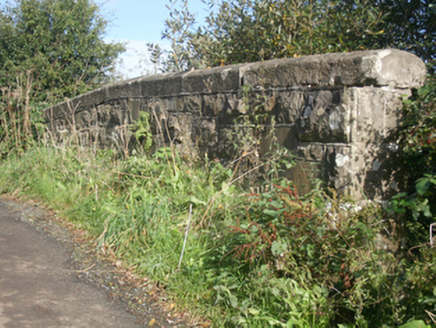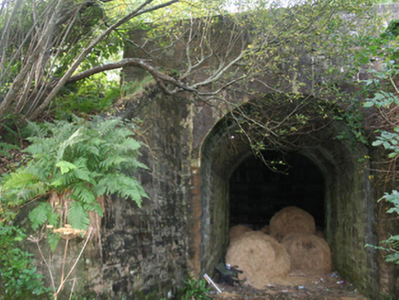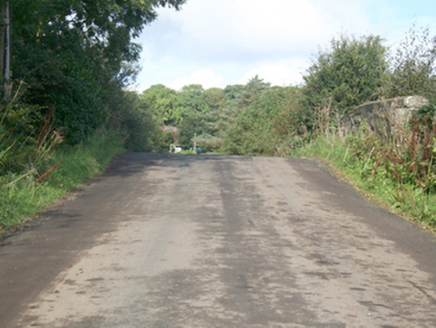Survey Data
Reg No
40901016
Rating
Regional
Categories of Special Interest
Architectural, Social, Technical
Original Use
Bridge
In Use As
Bridge
Date
1890 - 1910
Coordinates
238163, 447645
Date Recorded
17/09/2008
Date Updated
--/--/--
Description
Single-arch hump-backed railway bridge, built c. 1901, carrying small road over the former Buncrana to Carndonagh section of the Londonderry & Lough Swilly Railway line. Railway line now out of use with tracks removed (c. 1935); side elevations now largely covered in vegetation. Now also in use as an agricultural shed with corrugated-metal shed added to the south side. Round-headed arch with red brick voussoirs to arch; squared and coursed rubble stone construction to arch barrels. Snecked and squared mildly rock-faced stone construction to spandrels, abutments and to parapets with dressed stone coping over parapets. Snecked and squared rubble stone wing walls to either side of arch, along sides of former railway cutting, having coping over. Tarmacadam deck with grass verges. Located in the rural countryside to the north-west of Clonmany.
Appraisal
This former railway bridge retains much of its original form and character despite the closure of the line in 1935. The good-quality mildly rock-faced masonry used in the construction is a typical feature of late Victorian and Edwardian railway engineering and architecture in Ireland. It survives in relatively good condition, which is testament to the quality of its original construction. It was originally built by the Londonderry & Lough Swilly Railway Company as part of the Buncrana to Carndonagh section of the Londonderry to Lough Swilly Railway line, which opened on the 1st of July 1901 and closed in December 1935. This line was an extension of an earlier railway line from Derry to Buncrana that opened in 1864. This line had a narrow gauge of three foot. This railway bridge forms part of a group of structures associated with this former narrow gauge railway line in the landscape to the north of Inishowen, and it is an integral element of the built heritage and transport history of County Donegal.





